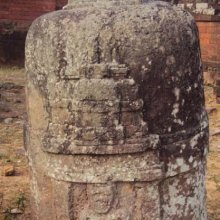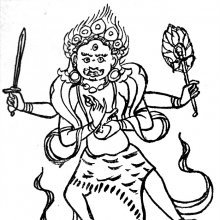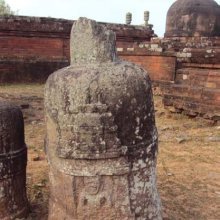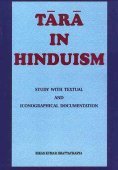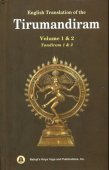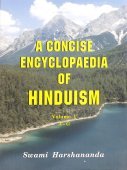Dhyana, Dhyāna, Dhyānā: 46 definitions
Introduction:
Dhyana means something in Buddhism, Pali, Hinduism, Sanskrit, Jainism, Prakrit, Marathi, Hindi. If you want to know the exact meaning, history, etymology or English translation of this term then check out the descriptions on this page. Add your comment or reference to a book if you want to contribute to this summary article.
Alternative spellings of this word include Dhyan.
Images (photo gallery)
(+64 more images available)
In Hinduism
Yoga (school of philosophy)
Source: Wisdom Library: YogaDhyāna (ध्यान, “meditation”) is a Sanskrit word referring to one of the eight brances of yoga, also known as the eightfold-path (aṣṭānga). Also see the fifth section of the Varāha-upaniṣad.
Source: Brill: Śaivism and the Tantric Traditions (yoga)Dhyāna (ध्यान) refers to one of the seven auxiliaries of Haṭhayoga, according to the 17th-century Haṭhayogasaṃhitā: a compilation on Haṭhayoga that borrows extensively from the Haṭhapradīpikā.—[...] The stated aim of Haṭhayoga is to achieve purification (śodhana), firmness (dṛḍhatā), steadiness (sthairya), constancy (dhairya), lightness (lāghava), direct perception (pratyakṣa) and liberation (nirlipta) of the body (ghaṭa). Its Haṭhayoga has seven auxiliaries: the ṣaṭkarma, āsana, mudrā, pratyāhāra, prāṇasaṃyāma, dhyāna and samādhi.
Source: ORA: Amanaska (king of all yogas): A Critical Edition and Annotated Translation by Jason BirchDhyāna (ध्यान) refers to “meditation”, according to Bhāgavatotpala’s Spandapradīpikā on 31.—The ‘dissolution’ of the mind was a description of the meditative process itself, as seen for example in Bhāgavatotpala’s definition of meditation (dhyāna): “When the mind has dissolved (līna) in the object of meditation, then that is said to be meditation”.

Yoga is originally considered a branch of Hindu philosophy (astika), but both ancient and modern Yoga combine the physical, mental and spiritual. Yoga teaches various physical techniques also known as āsanas (postures), used for various purposes (eg., meditation, contemplation, relaxation).
Purana and Itihasa (epic history)
Source: archive.org: Puranic EncyclopediaDhyāna (ध्यान).—(Meditation). Even from ancient times the people of Bhārata believed that heaven could be attained by meditation. There are scientific methods of meditating upon God. They are described below:
The root "dhyai", means "to think". Dhyāna (meditation) means thinking of God with concentration. God is invisible and figureless. We can meditate only upon some material that contains the attributes of God. So dhyāna (meditation) is to fix the mind on the object of meditation, and to imagine that particular object in a particular place and to concentrate the mind upon it. One who casts off his body, while engaged in meditation attains 'Sāyujya' (oneness with God). (See full article at Story of Dhyāna from the Puranic encyclopaedia by Vettam Mani)
Source: Cologne Digital Sanskrit Dictionaries: The Purana IndexDhyāna (ध्यान).—A dharma of the yoga, kills unrighteous qualities;1 described by Kṛṣṇa to Uddhava.2

The Purana (पुराण, purāṇas) refers to Sanskrit literature preserving ancient India’s vast cultural history, including historical legends, religious ceremonies, various arts and sciences. The eighteen mahapuranas total over 400,000 shlokas (metrical couplets) and date to at least several centuries BCE.
Vastushastra (architecture)
Source: McGill: The architectural theory of the MānasāraDhyāna (ध्यान).—Each aspect of construction has a “theological” (oscillating between mythical and metaphysical) dimension, which the sthapati accesses through a spiritual kind of “seeing” while conducting the operation or performing the ritual. This is dhyāna, meditation (as well as contemplation). Dhyāna derives from √dhyā, “to think, contemplate”, which, etymologically, is “a perfectly normal variant of the root from √dhī [‘to see, perceive’]” (see Jan Gonda, The Vision al the Vedic Poets, “dhyānam”).
The principle behind dhyāna in artistic and architectural making is that of identification. The sthapati pierces into the metaphysical essence of the form being created and identifies himself as one with it. This is achieved through a dialectic between the “technique” (in the yogic sense) of intense contemplation that the sages employed on the one hand, and the emotional rapture of devotional love ending in ecstatic vision that the saints experienced (the latter implied in the text by the term rāga, passion, and its connotations pertinent to artistic creativity) on the other. In each of these modes, the perceptual and cognitive faculties are absorbed into the spiritual experience of union with the divine.
Source: Brill: Śaivism and the Tantric Traditions (architecture)Dhyāna (ध्यान) refers to “meditation”, according to the Piṅgalāmata (verse 10.33-36).—Accordingly, [while describing the pura on a 9-by-9-plan and the 32 padas]—“My dear, at Yama and Gandharva one should make a maṭha with three storeys, two [storeys] or one storey. [These are] the best, middling and least [maṭhas] in turn. That is the place for the Ācārya to sleep, for [prognostication of] auspicious days, triumph, meditation (dhyāna—dhyānaṃ), and the practice of Yoga. [There the teacher] may associate with vīras, sharing vīra food and drink, etc.”.
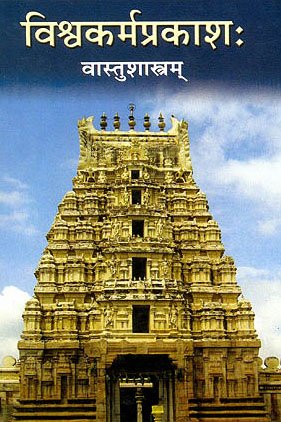
Vastushastra (वास्तुशास्त्र, vāstuśāstra) refers to the ancient Indian science (shastra) of architecture (vastu), dealing with topics such architecture, sculpture, town-building, fort building and various other constructions. Vastu also deals with the philosophy of the architectural relation with the cosmic universe.
Shaktism (Shakta philosophy)
Source: Google Books: ManthanabhairavatantramDhyāna (ध्यान) refers to the “visualized form” (e.g., of the goddess), according to the second recension of the Yogakhaṇḍa of the Manthānabhairavatantra, a vast sprawling work that belongs to a corpus of Tantric texts concerned with the worship of the goddess Kubjikā.—Accordingly, “In the meantime, once the goddess had crossed over the most excellent Yoga and once the fifth night had passed, she emerged from the middle of the Liṅga. [...] She (also has other forms with) two or six arms and, beautiful, sits on five ghosts. In the left hand (she holds) a skull and (in her other) upraised hands (she holds a) noose and spear. Crooked, her body grey, she is Cāmuṇḍā, the accomplished Yoginī. This Vidyā, of many forms, is the woman who resides within the Triangle. Such is the visualized form [i.e., dhyāna] of the goddess, the deity called Khageśī”.
Source: academia.edu: The Śāradātilakatantra on YogaDhyāna (ध्यान) is explained by Lakṣmaṇadeśika in his 11th-century Śaradātilaka.—The type of meditation (dhyāna) described as the seventh limb of yoga has the chosen deities as objects (26) and is therefore termed “filled” in Rāghavabhaṭṭa’s commentary.

Shakta (शाक्त, śākta) or Shaktism (śāktism) represents a tradition of Hinduism where the Goddess (Devi) is revered and worshipped. Shakta literature includes a range of scriptures, including various Agamas and Tantras, although its roots may be traced back to the Vedas.
Shaivism (Shaiva philosophy)
Source: academia.edu: The Śaiva Yogas and Their Relation to Other Systems of YogaDhyāna (ध्यान, “meditation”) refers to one of the six members (aṅga) of the Ṣaḍaṅgayoga, as taught in the early Śaiva Siddhānta.—Ṣaḍaṅgayoga is taught as the standard yoga of the Śaivasiddhānta (Siddhānta) a mainstream, Veda congruent dualist tradition. See, for example, the 6th century texts of Raurava-āgama, Kiraṇa-āgma, Sarvajñānottara-āgama, Svāyambhuvasūtrasaṃgraha, the 7th century Mālinīvijayottara and the 9th century Tantrasadbhāva.
Source: Brill: Śaivism and the Tantric TraditionsDhyāna (ध्यान) refers to “meditation”, according to the Kiraṇatantra chapter 49 (dealing with vratacaryā).—Accordingly, “Garuḍa spoke: ‘You have taught me, O great Lord, the activities of the Neophyte, the Putraka and the Ācārya. Tell me those of the Sādhaka’. The Lord spoke: ‘The excellent Sādhaka [should be] full of sattva, firm, capable of endurance, his mind fixed on [his] mantra, unassailable, of great wisdom, looking impartially on mud, stones and gold engaged, regular in [the performance of] oblations, always devoted to recitation (japa) and meditation (dhyāna), dexterous in the dispelling of obstacles, firm in [the practice of his] religious observance, calm, pure. [...]’”.

Shaiva (शैव, śaiva) or Shaivism (śaivism) represents a tradition of Hinduism worshiping Shiva as the supreme being. Closely related to Shaktism, Shaiva literature includes a range of scriptures, including Tantras, while the root of this tradition may be traced back to the ancient Vedas.
Pancaratra (worship of Nārāyaṇa)
Source: archive.org: Isvara Samhita Vol 1Dhyāna (ध्यान) refers to one of the three functions of saṃyama (self-control).—The Pāñcarātrāgama offers its own treatment which has a significant contribution. Dhāraṇā is retaining the mind in God, dhyāna is joining the mind in God and meditating upon Him and samādhi is mere appearance of the nature of the object, (God). According to Viṣṇupurāṇa. (VI.7.86), dhāraṇā is stability of the citta In God, dhyāna is continuity of that cognition without any desire for other things (ibid. VI.7.91) and samādhi is a stage in Yogic practise in which God’s own nature is grasped without any imagined appendage (ibid. VI.7.92).
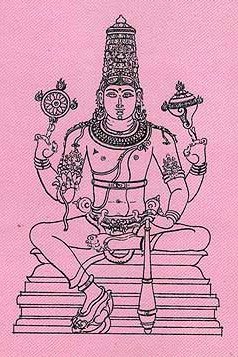
Pancaratra (पाञ्चरात्र, pāñcarātra) represents a tradition of Hinduism where Narayana is revered and worshipped. Closeley related to Vaishnavism, the Pancaratra literature includes various Agamas and tantras incorporating many Vaishnava philosophies.
Shilpashastra (iconography)
Source: Shodhganga: The significance of the mūla-beras (śilpa)Dhyāna (ध्यान) or Dhyānahasta refers to “meditation” and represents one of the four gestures with both hands, as defined according to texts dealing with śilpa (arts and crafs), known as śilpaśāstras.—Accordingly, pratimā-lakṣaṇa (body postures of the icons) is comprised of hand gestures (hasta, mudrā or kai-amaiti), stances/poses (āsanas) and inflexions of the body (bhaṅgas). There are thirty-two types of hands [viz., dhyāna-hasta] classified into two major groups known as tolirkai (functional and expressive gestures) and elirkai (graceful posture of the hand).

Shilpashastra (शिल्पशास्त्र, śilpaśāstra) represents the ancient Indian science (shastra) of creative arts (shilpa) such as sculpture, iconography and painting. Closely related to Vastushastra (architecture), they often share the same literature.
Ganapatya (worship of Ganesha)
Source: Google Books: Ganapati: Song of the SelfDhyāna (ध्यान) refers to “meditation”, representing one of the possible preliminary rites (upacāra) of a pūjā (deity worship).—Each act in a pūjā is not only physical and/or mental, but also symbolic, cosmic, and spiritual. Sprinkling, sipping, and bathing are symbolic of purification, of the worshipped as well as of the worshipper and the surroundings. Various offerings [viz., dhyāna] symbolize the surrendering of one’s latent tendencies (vāsanā) as expressed in thoughts, words, and deeds.
Ganapatya (गाणपत्य, gāṇapatya) represents a tradition of Hinduism where Ganesha is revered and worshipped as the prime deity (ishta-devata). Being a minor though influential movement, Ganapatya evovled, llike Shaktism and Shaivism, as a separate movement leaving behind a large body of literature.
Vaishnavism (Vaishava dharma)
Source: Pure Bhakti: Bhagavad-gita (4th edition)Dhyāna (ध्यान) refers to “meditation, the seventh stage of aṣṭāṅga-yoga”. (cf. Glossary page from Śrīmad-Bhagavad-Gītā).
Source: Pure Bhakti: Brhad BhagavatamrtamDhyāna (ध्यान) refers to:—Meditation. (cf. Glossary page from Śrī Bṛhad-bhāgavatāmṛta).
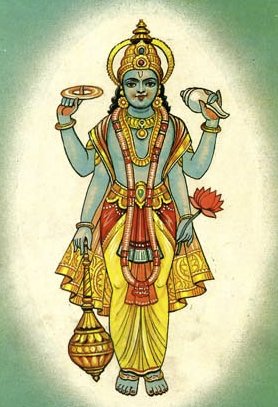
Vaishnava (वैष्णव, vaiṣṇava) or vaishnavism (vaiṣṇavism) represents a tradition of Hinduism worshipping Vishnu as the supreme Lord. Similar to the Shaktism and Shaivism traditions, Vaishnavism also developed as an individual movement, famous for its exposition of the dashavatara (‘ten avatars of Vishnu’).
Vedanta (school of philosophy)
Source: Shodhganga: Siva Gita A Critical StudyDhyāna (ध्यान, “meditation”) refers to sustained concentration.—Meditation (dhyāna) is the effortless abidance in the awareness of one’s True nature.
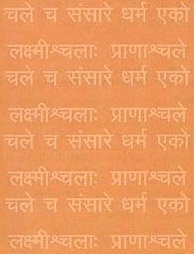
Vedanta (वेदान्त, vedānta) refers to a school of orthodox Hindu philosophy (astika), drawing its subject-matter from the Upanishads. There are a number of sub-schools of Vedanta, however all of them expound on the basic teaching of the ultimate reality (brahman) and liberation (moksha) of the individual soul (atman).
Ayurveda (science of life)
Source: gurumukhi.ru: Ayurveda glossary of terms1) Dhyāna (ध्यान):—One of the 5 types of worship of mercury
2) Meditation
3) Thinking excessively

Āyurveda (आयुर्वेद, ayurveda) is a branch of Indian science dealing with medicine, herbalism, taxology, anatomy, surgery, alchemy and related topics. Traditional practice of Āyurveda in ancient India dates back to at least the first millenium BC. Literature is commonly written in Sanskrit using various poetic metres.
General definition (in Hinduism)
Source: WikiPedia: HinduismDhyāna can refer to either meditation or meditative states. Equivalent terms are "Chán" in modern Chinese, "Zen" in Japanese, "Seon" in Korean, "Thien" in Vietnamese, and "Samten" in Tibetan.
As a meditative state, dhyāna is characterized by profound stillness and concentration. It is discussed in the Pāli canon (and the parallel agamas) and post-canonical Theravāda Buddhist literature, and in other literature. There has been little scientific study of the states so far.
Dhyāna in Sanskrit (Devanagari: ध्यान) or jhāna (झान) in Pāli;
Source: ACHC: Smarta PujaDhyāna (ध्यान) refers to a “meditation verse” (describing the appearance of a deity) representing one of the various preparatory rites performed before pūjā (ritualistic worship of a deity) which aim at the purification of the devotee.—The worshipper takes flowers or unbroken rice in the hollow of the joined hands and recites the meditation verse(s). The flowers—consecrated by the mantra(s)—are then offered to the deity. A meditation (dhyāna) verse is a stanza describing the appearance of a deity in order to help the worshipper visualize the deity. Here five verses are supplied according to the five deities of the pañcāyatana, where the deities (Viṣṇu, Śiva, Ganesa, Sūrya, Devī) are arranged in such a way that one’s favorite deity is placed in the centre surrounded by the other deities arranged in a particular order. The verse addressed to the favorite deity (here: Viṣṇu) is recited first.
The devotee is expected not only to recite the verse but to meditate on the form of the deity. In the current performance, however, which is often done hurriedly, dhyāna has been reduced to the mere recitation of the prescribed verses).
In Buddhism
Mahayana (major branch of Buddhism)
Source: Wisdom Library: Maha Prajnaparamita SastraDhyāna (ध्यान, “meditation”) according to the Mahāprajñāpāramitāśāstra (chapter XXVIII).—“meditation (dhyāna) is the concentrating of the distracted mind (vikṣiptacitta-saṃgrahaṇa). Distractions whirl about more easily than the down-feathers of the wild goose (sārasaloman); if their flying off is not restrained, their speed is greater than that of a hurricane; they are harder to contain than a monkey (markaṭa); they appear and disappear more quickly than lightning (vidyut). If the characteristic of the mind is at this point not fixed, those who want to control it would not succeed without dhyāna.”.
Dhyāna is the source of the virtue of meditation (dhyānapāramitā). In the dhyānas, the Vodhisattva does not relish any enjoyment (āsvadana), does not seek any reward (vipāka) and does not pursue heavenly rebirths as reward. It is in order to tame his own mind that he enters into dhyāna. By the skillful means of his wisdom (prajñopāya), he will be reborn in kāmadhātu in order to save beings there. Dhyāna takes the name of virtue in this case.
Source: academia.edu: A Study and Translation of the GaganagañjaparipṛcchāDhyāna (ध्यान) refers to “meditation”, according to the Gaganagañjaparipṛcchā: the eighth chapter of the Mahāsaṃnipāta (a collection of Mahāyāna Buddhist Sūtras).—Accordingly, “How, son of good family, does the meditation (dhyāna) of the Bodhisattva become like open space? Son of good family, the meditation of the Bodhisattva becomes like the expanse of the sky when he is endowed with the four dharmas. [...] When he is endowed with those four dharmas, son of good family, the meditation of the Bodhisattva becomes like open space”.

Mahayana (महायान, mahāyāna) is a major branch of Buddhism focusing on the path of a Bodhisattva (spiritual aspirants/ enlightened beings). Extant literature is vast and primarely composed in the Sanskrit language. There are many sūtras of which some of the earliest are the various Prajñāpāramitā sūtras.
Tibetan Buddhism (Vajrayana or tantric Buddhism)
Source: archive.org: The Indian Buddhist IconographyDhyāna (ध्यान, “meditation”) refers to one of six limbs of Yoga to be employed in Uttamasevā (excellent worship), according to the Guhyasamāja chapter 18.—[...] Dhyāna (meditation) is explained as the conception of the five desired objects through the five Dhyāni Buddhas, namely, Vairocana, Ratnasambhava, Amitābha, Amoghasiddhi and Akṣobhya.
This Dhyāna is again subdivided into five kinds:
- Vitarka (cogitation),
- Vicāra (thinking),
- Priti (pleasure),
- Sukha (happiness),
- Ekāgratā (concentration).
Dhyānā (ध्याना) is the name of a Ḍākinī who, together with the Vīra (hero) named Dhyānacinta forms one of the 36 pairs situated in the Vākcakra, according to the 10th century Ḍākārṇava chapter 15. Accordingly, the vākcakra refers to one of the three divisions of the nirmāṇa-puṭa (emanation layer’), situated in the Herukamaṇḍala. The 36 pairs of Ḍākinīs [viz., Dhyānā] and Vīras are reddish madder in color; they each have one face and four arms; they hold a skull bowl, a skull staff, a small drum, and a knife.
Source: OSU Press: Cakrasamvara SamadhiDhyāna (ध्यान) refers to one of the “four mountains” (Parvata), according to the Guru Mandala Worship (maṇḍalārcana) ritual often performed in combination with the Cakrasaṃvara Samādhi, which refers to the primary pūjā and sādhanā practice of Newah Mahāyāna-Vajrayāna Buddhists in Nepal.

Tibetan Buddhism includes schools such as Nyingma, Kadampa, Kagyu and Gelug. Their primary canon of literature is divided in two broad categories: The Kangyur, which consists of Buddha’s words, and the Tengyur, which includes commentaries from various sources. Esotericism and tantra techniques (vajrayāna) are collected indepently.
General definition (in Buddhism)
Source: Wisdom Library: Dharma-samgraha1) Dhyāna (ध्यान, “meditation”) or dhyānapāramitā represents the fifth of the “six perferctions” (ṣaṭpāramitā) as defined in the Dharma-saṃgraha (section 17). The Dharma-samgraha (Dharmasangraha) is an extensive glossary of Buddhist technical terms in Sanskrit (e.g., ṣaṣ-pāramitā and dhyāna). The work is attributed to Nagarjuna who lived around the 2nd century A.D.
Dhyāna forms, besides a part of the “six perferctions” (ṣaṭpāramitā), also a part of the “ten perfections” (daśa-pāramitā).
2) Dhyāna (ध्यान, “absorption”) or Caturdhyāna refers to the “four absorptions” as defined in the Dharma-saṃgraha (section 72):
- the first absorption has thinking, reflection, and the happiness and joy born of seclusion,
- the second has internal clarity, and happiness and joy,
- the third is equanimous, mindful, and has full knowledge,
- the fourth absorption has complete purity of mindfulness and equanimity, with feeling that is neither-unpleasant-nor-pleasant.
3) Dhyāna (ध्यान, “meditation”) or Tridhyāna also refers to the “three kinds of meditation” as defined in the Dharma-saṃgraha (section 109):
- sadoṣāpakarṣa-dhyāna (editation with fault that leads to decay),
- sukhavaihārika-dhyāna (meditation that is a happy abiding),
- aśeṣavaibhūṣita-dhyāna (meditation that is entirely magnificent).
In Jainism
General definition (in Jainism)
Source: Google Books: Yoga in JainismDhyāna (ध्यान, “concentration of mind”).—In the Jaina tradition dhyāna generally means “concentrating the mind” on some object or mental image. According to them our thoughts, and their instrument, the mind, are restless, and their regulation and concentration is called dhyāna.
Jainism describes four kinds of dhyāna:
- ārta-dhyāna (the concentration of the mind on fulfilling worldly desires),
- raudra-dhyāna (the concentration of thoughts on violent activities),
- dharma-dhyāna (the concentration of the mind on auspicious thoughts, or on the well-being of one’s self as well as the well-being of others),
- śukla-dhyāna (here the mind gradually shortens it fields of concentration and at last becomes nirvikalpa, steady and motionless)
The author of the Jñānārṇava, in addition, elaborately expounds the process of dhyāna by classifying into:
- piṇḍastha (comprises the five forms of dhāraṇā, or ‘contemplation’),
- padastha (contemplation by means of certain mantric syllables),
- rūpastha (meditating on the divine qualities and extraordinary powers of the arahants),
- rūpātīta (meditation on the attributes of siddhātman.)
Dhyāna (ध्यान) refers to 4 kinds of meditation:—
- piṇḍastha, meditation on the elements.
- padastha, meditation on pure syllables.
- rūpastha, meditation on the form of the Tīrthaṅkaras.
- rūpavārjita, meditation on the soul as pure spirit without form.
Dhyāna (ध्यान).—What is meant by ‘meditation’ (dhyāna)? Concentrating of thoughts on one object for a maximum of one Indian-hour by an ascetic with perfect body structure (uttama-sahanana-śarira) is called meditation. An ascetic with perfect body structure can meditate properly for a maximum period of an Indian-hour (48 minutes approx). An Indian-hour is equal to two ghadī. A ghadī equals 24 minutes.
The four types of meditation are:
- ārta-dhyāna (pan based or mournful),
- raudra-dhyāna (cruel),
- dharmya-dhyāna (virtuous),
- śukla-dhyāna (the pure).
What are the benefits of meditation (dhyāna)? It annihilates all karmas bonded with the soul. A correct meditation for an intra-Indian-hour (antaramuhūrta) can destroy all obscuring karmas and enable the practitioner to become an omniscient. What are the essential components for a proper meditation (dhyāna)? The four things, namely: the one who meditates, the process of meditation, the object of meditation and the period of meditation are the four components of the proper meditation.
Source: The University of Sydney: A study of the Twelve ReflectionsDhyāna (ध्यान) (Prakrit: Jhāṇa) refers to the “four kinds of meditation”, according to the Sthānāṅga Sūtra chapter 4.1.—The classification of meditation in the Sthānāṅga Sūtra comprises four kinds—
- “anguished” (aṭṭa/ārta),
- “angry” (rodda/raudra),
- “virtuous” (dhamma/dharma) and
- “pure” (sukka/śukla).
It referred to four types of reflection as assisting in the process of “virtuous meditation” (dhammajhāṇa/dharmadhyāna) and “pure meditation” (sukkajhāṇa/ śukladhyāna).

Jainism is an Indian religion of Dharma whose doctrine revolves around harmlessness (ahimsa) towards every living being. The two major branches (Digambara and Svetambara) of Jainism stimulate self-control (or, shramana, ‘self-reliance’) and spiritual development through a path of peace for the soul to progess to the ultimate goal.
Languages of India and abroad
Marathi-English dictionary
Source: DDSA: The Molesworth Marathi and English Dictionarydhyāna (ध्यान).—n (S) Meditation or reflection, esp. that profound and abstract contemplation, the favorite religious exercise of secluded Brahmans. 2 Mind, apprehension, understanding. Ex. hī gōṣṭa dhyānānta yēta nāhīṃ. 3 Attention, advertence, heed, regard. Ex. tē gaḍī khēḷatīla viraṅguḷatīla tikaḍē dhyāna asūṃ dyā. 4 Mind, memory, remembrance. Ex. hī gōṣṭa myāṃ dhyānānta ṭhēvilī āhē. 5 Presence of the senses and faculties. Ex. mī nijūna uṭhalōṃ āhēṃ ajhūṇa pura- tā dhyānāvara ālōṃ nāhīṃ. 6 Liking, approval, mind. Ex. myāṃ jēṃ kēlēṃ tēṃ tyācē dhyānāsa yēta nāhīṃ. 7 Form, figure, the aspect, air, appearance;--esp. used of the images of the deities as they are represented in different attitudes and under different dispositions (of their arms, legs, weapons &c.) Ex. hēṃ dhyāna ugra, tēṃ dhyāna saumya. Hence, laxly, Air, cast, manner, style, fashion; general bearing or character. Ex. dōghē jaṇa sāvakārī karatāta parantu tēṃ dhyāna nirāḷēṃ hēṃ dhyāna nirāḷēṃ; ājacē gāṇyācēṃ kāṃhīṃ dhyānaca nirāḷēṃ. 8 The piece of poetry describing any dhyan or representation of a god. 9 Applied to a crazy or idiotic person, to a mischievous child &c. dhyānāsa lāgaṇēṃ g. of o. To think upon or pursue fondly, intently, devotedly &c.
Source: DDSA: The Aryabhusan school dictionary, Marathi-Englishdhyāna (ध्यान).—n Meditation or reflection. Mind, apprehension. Attention, memory. Liking, approval. Form, the aspect. Applied to a crazy or idiotic person, to a mischievous child &c. dhyānāsa lāgaṇēṃ g. of o. To think upon or pursue fondly, intently, devotedly &c.
Marathi is an Indo-European language having over 70 million native speakers people in (predominantly) Maharashtra India. Marathi, like many other Indo-Aryan languages, evolved from early forms of Prakrit, which itself is a subset of Sanskrit, one of the most ancient languages of the world.
Sanskrit dictionary
Source: DDSA: The practical Sanskrit-English dictionaryDhyāna (ध्यान).—&c. See under ध्यै (dhyai); ध्यातं वित्तमहर्निशं नियमितप्राणैर्न शम्भोः पदम् (dhyātaṃ vittamaharniśaṃ niyamitaprāṇairna śambhoḥ padam) Bhartṛhari 3.13.
See also (synonyms): dhyāta, dhyānika.
--- OR ---
Dhyāna (ध्यान).—[dhyai-bhāve-lyuṭ]
1) Meditation, reflection, thought; contemplation; ज्ञानाद् ध्यानं विशिष्यते (jñānād dhyānaṃ viśiṣyate) Bhagavadgītā (Bombay) 12.12; Manusmṛti 1.12; 6.72.
2) Especially, abstract contemplation, religious meditation; तदैव ध्यानादवगतोऽस्मि (tadaiva dhyānādavagato'smi) Ś.7; ध्यानस्तिमितलोचनः (dhyānastimitalocanaḥ) R.1.73.
3) Divine intuition or discernment.
4) Mental representation of the personal attributes of a deity; इति ध्यानम् (iti dhyānam).
Source: Cologne Digital Sanskrit Dictionaries: Edgerton Buddhist Hybrid Sanskrit DictionaryDhyāna (ध्यान).—nt. (Sanskrit id.; in technical sense = Pali jhāna), lit. meditation or contemplation; mystic ‘trance’; Lévi (Asaṅga (Mahāyāna-sūtrālaṃkāra)) extase. Normally four, as in Pali, described in some detail in a long ancient passage (the Pali form, virtually identical, cited in Childers), found with hardly a true variant Lalitavistara 129.1—11; 343.14—344.4; Mahāvastu i.228.3—10; ii.131.16—132.5; Mahāvyutpatti 1478—1481; an abbreviated form, giving the central points, as follows: savitarkaṃ savicāraṃ vivekajaṃ prītisukham iti prathamadhyānaṃ, adhyātma- [Page287-b+ 71] pramodanāt prītisukham iti dvitīyaṃ, upekṣāsmṛtisaṃ- prajanyaṃ sukham iti tṛtīyaṃ, upekṣāsmṛtipariśuddhir aduḥkhāsukhā vedaneti caturthaṃ dhyānam iti Dharmasaṃgraha 72; they are the first four of the nine anupūrvavihāra- (-samāpatti), qq.v.; these are related to the four dhyāna- bhūmi constituted or occupied by the various classes of rūpāvacara gods (see deva), as explained by Childers, in that attainment in worldly life of (various stages of adeptness in) each of the four dhyāna leads to rebirth in successively higher stages among these gods; catu-dhyāna- (meter proves single initial consonant pronounced for written dhy-)-dhyāyino (as before) Saddharmapuṇḍarīka 131.5 (verse); three dhyāna, listed as sadoṣāpakarṣa-, sukhavaihārika-, and aśeṣavaibhūṣita- (read °vaibhūtika-? see this word), Dharmasaṃgraha 109; I have found no other trace of this list; the names sound vaguely as if the first might apply to the first of the 4 dhyāna, the second to the 2d and 3d combined, and the third to the 4th; in Laṅkāvatāra-sūtra 10.11 na ṣaḍdhyānādidhyāyinā (tvayā bhavitavyam), you should not meditate on such things as the six dhyāna; apparently some reprehended practices are meant, but I have no more idea of the specific meaning than had Suzuki (Studies, 414).
Source: Cologne Digital Sanskrit Dictionaries: Shabda-Sagara Sanskrit-English DictionaryDhyāna (ध्यान).—n.
(-naṃ) 1. Meditation, reflection, but especially that profound and abstract consideration which brings its object fully and undisturbedly before the mind. 2. Mental representation of the personal attributes of the divinity to whom worship is addressed. E. dhyai to meditate, affix bhāve lyuṭ .
Source: Cologne Digital Sanskrit Dictionaries: Benfey Sanskrit-English DictionaryDhyāna (ध्यान).—i. e. dhyai + ana, n. 1. Religious, pious meditation, [Bhāgavata-Purāṇa, (ed. Burnouf.)] 3, 12, 13; [Bhagavadgītā, (ed. Schlegel.)] 12, 12; [Vedāntasāra, (in my Chrestomathy.)] in
Dhyāna (ध्यान).—[neuter] thought, reflection, (religious) meditation; p. vant & dhyānin.
Source: Cologne Digital Sanskrit Dictionaries: Aufrecht Catalogus CatalogorumDhyāna (ध्यान) as mentioned in Aufrecht’s Catalogus Catalogorum:—vaid. Oudh. Xxi, 10.
Source: Cologne Digital Sanskrit Dictionaries: Monier-Williams Sanskrit-English Dictionary1) Dhyāna (ध्यान):—[from dhyai] n. meditation, thought, reflection, ([especially]) profound and abstract religious meditation, (nam āpad, ā-√sthā or naṃ-√gam, to indulge in r° m°), [Chāndogya-upaniṣad; Manu-smṛti; Mahābhārata; Kāvya literature] etc. (with Buddhists divided into 4 stages, [Monier-Williams’ Buddhism 209; Dharmasaṃgraha lxxii]; but also into 3 [ib. cix])
2) [v.s. ...] mental representation of the personal attributes of a deity, [Horace H. Wilson]
3) [v.s. ...] insensibility, dulness, [Bhāvaprakāśa]
4) [v.s. ...] m. Name of a [particular] personification, [Maitrāyaṇī-saṃhitā]
5) [v.s. ...] of the 11th day of the light half in Brahma’s month, [Purāṇa]
Source: Cologne Digital Sanskrit Dictionaries: Yates Sanskrit-English DictionaryDhyāna (ध्यान):—(naṃ) 1. n. Meditation; reflection.
Source: DDSA: Paia-sadda-mahannavo; a comprehensive Prakrit Hindi dictionary (S)Dhyāna (ध्यान) in the Sanskrit language is related to the Prakrit word: Jhāṇa.
[Sanskrit to German]
Sanskrit, also spelled संस्कृतम् (saṃskṛtam), is an ancient language of India commonly seen as the grandmother of the Indo-European language family (even English!). Closely allied with Prakrit and Pali, Sanskrit is more exhaustive in both grammar and terms and has the most extensive collection of literature in the world, greatly surpassing its sister-languages Greek and Latin.
Hindi dictionary
Source: DDSA: A practical Hindi-English dictionaryDhyāna (ध्यान) [Also spelled dhyan]:—(nm) attention, heed; meditation; contemplation; concentration of mind; ~[gamya] perceivable or perceived only through contemplation/meditation, realised through contemplation/meditation; ~[tatpara/niṣṭha/para/parāyaṇa/magna/rata] absorbed or engrossed in contemplation/meditation; contemplative; meditative; —[yoga] meditation-based [yoga; ~sādhya] achievable or achieved through contemplation/meditation; ~[stha] engrossed or steeped in meditation; meditating, contemplating; —[ānā] to remember, to recall; —[chūṭanā] to have one’s meditation interrupted; to lose the concentration of mind; —[denā] to heed, to pay attention; to contemplate or meditate; —[dharanā] to meditate or contemplate; —[baṃdhanā] to have the mind concentrated upon; —[meṃ na lānā] to ignore, not to mind; —[lagānā] to concentrate (upon), to meditate; —[se utaranā] to forget, to lose the memory of.
...
Kannada-English dictionary
Source: Alar: Kannada-English corpusDhyāna (ಧ್ಯಾನ):—
1) [noun] the act of meditating or thinking deeply; meditation; thought; reflection.
2) [noun] profound and abstract religious meditation.
3) [noun] observant care; consideration; attention.
4) [noun] the act of concentrating; the state of being concentrated; ಧ್ಯಾನ ಮಾಡು [dhyana madu] dhyāna māḍu to meditate; to think deeply.
5) [noun] to engage in abstract religious meditation.
6) [noun] to observe; to consider.
7) [noun] to concentrate on.
Kannada is a Dravidian language (as opposed to the Indo-European language family) mainly spoken in the southwestern region of India.
Nepali dictionary
Source: unoes: Nepali-English DictionaryDhyāna (ध्यान):—n. 1. meditation; 2. concentration; contemplation; attention; memory;
Nepali is the primary language of the Nepalese people counting almost 20 million native speakers. The country of Nepal is situated in the Himalaya mountain range to the north of India.
See also (Relevant definitions)
Starts with (+114): Dhyana-dinu, Dhyana-garnu, Dhyana-rakhnu, Dhyanabalat, Dhyanabhanga, Dhyanabhumi, Dhyanabhyasa, Dhyanabindupanishad, Dhyanacakshus, Dhyanaccheda, Dhyanachinta, Dhyanachurnika, Dhyanacinta, Dhyanacurnika, Dhyanadagdha, Dhyanadhara, Dhyanadharana, Dhyanadharanavinirmukta, Dhyanadharini, Dhyanadhira.
Ends with (+96): Abhidhyana, Adhyana, Adhyatmadhyana, Adyashaktidhyana, Ajnadhyana, Ambikadvirupanamadhyana, Amritadhyana, Anadhyana, Antaradhyana, Antardhyana, Anubudhyana, Anudhyana, Apadhyana, Artadhyana, Asheshavaibhushitadhyana, Atmadhyana, Avadhyana, Avahitadhyana, Avavidhyana, Bahvadhyana.
Full-text (+665): Dhyanayoga, Antardhyana, Dhyanapara, Dhyanatatpara, Jhana, Dhyanamudra, Paradhyana, Yoganga, Dhyanagocara, Paramita, Rupadhatu, Ashtangayoga, Adhyana, Dhyanastha, Nidhyana, Dhyanavant, Asphanaka, Nirmanacitta, Abhidhyana, Dhyanika.
Relevant text
Search found 164 books and stories containing Dhyana, Dhyāna, Dhyānā; (plurals include: Dhyanas, Dhyānas, Dhyānās). You can also click to the full overview containing English textual excerpts. Below are direct links for the most relevant articles:
Varahi Tantra (English Study) (by Roberta Pamio)
Chapter 12 - The Dhyānas (supports for the meditation) of the Goddess < [Summary of the Vārāhī Tantra]
Chapter 2 - A hymn to the Śrīkrama < [Summary of the Vārāhī Tantra]
Chapter 32 - Homa (fire sacrifice) and Saṃskāra (consecration rituals) < [Summary of the Vārāhī Tantra]
Brihad Bhagavatamrita (commentary) (by Śrī Śrīmad Bhaktivedānta Nārāyana Gosvāmī Mahārāja)
Verse 2.3.157 < [Chapter 3 - Bhajana (loving service)]
Verse 2.3.154 < [Chapter 3 - Bhajana (loving service)]
Verse 2.3.151 < [Chapter 3 - Bhajana (loving service)]
Maha Prajnaparamita Sastra (by Gelongma Karma Migme Chödrön)
4. Third dhyāna < [Part 3 - Definition of the various dhyānas and samāpattis]
Part 8 - Predicting the fruits of ripening of various kinds of gifts < [Chapter XLIX - The Four Conditions]
I. The four trances (dhyāna) according to the Abhidharma < [Class 2: The four trances]
Abhidharmakośa (by Leo M. Pruden)
The Great Chariot (by Longchenpa)
Part 3c.2 - How to establish samadhi by becoming familiar with this < [B. The gradation of powers of those who meditate into high, middle, and low]
Part 1b.1g - As for the divisions of the individual aspects < [B. The extensive explanation of the nature of karma]
Part 10b.5) The six perfections: Meditation < [B. the extensive explanation of arousing bodhicitta]
The Buddhist Path to Enlightenment (study) (by Dr Kala Acharya)
Two types of Tapas (Austerities) < [Chapter 4 - Comparative Study of Liberation in Jainism and Buddhism]
The twelve Bhāvanās (reflection or thinking) < [Chapter 4 - Comparative Study of Liberation in Jainism and Buddhism]
Related products
